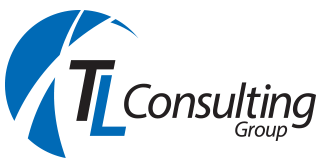Modernising Legacy Systems
A Case StudyWhere Infrastructure/Application Stack Modernisation and DevOps Converge
Modernising legacy systems to meet customer demands and take advantage of innovation is critical to prevent losing competitive advantage and market share. Legacy modernisation is about using and reusing applications past strengths and combining them with the opportunities that current and future technologies present.
When reviewing modernising legacy systems opportunities the common pitfall is not properly assessing the Cloud migration pathways available.
TL Consulting can address these challenges by applying innovative application re-platforming strategies to further assess and optimise the customer experience, with architecture and advisory services to accelerate your Cloud native journey. With a mindset shift, aspirations such as container orchestration, infrastructure as code, CICD and Full-Stack (infrastructure & application) automation are where never thought possible previously.
NSW Government Case Study
TL Consulting was engaged to re-architecture Oracle SOA platform
and solve these key issues.
Problem Statement:
Legacy apps and processes: Faced with escalating costs, the customer was nevertheless circumspect about architectural changes and containerisation – there was concern around legacy apps (PeopleSoft) and immature DevOps practices required to underpin infrastructure-as-code models
High Cost: The customer had completed a “lift and shift” to cloud model to migrate to cloud which was not cost efficient. The entire application and infrastructure stack was replicated to provide fault tolerance, leading to high costs
No Control: The customer had minimal control over the environment as it was hosted on a partner’s VPC. The customer needed to regain control
Manual HA: Oracle’s High Availability model was implemented using an Active-Standby model of the full setup causing waste of compute resources and required a manual trigger to switch
Client Outcomes – Metrics
%
TCO/COST REDUCTION
TCO/Cost: 60% reduction when compared to the cost of running the old high availability pair
Application and development and infrastructure-as-code are rapidly converging, and correct DevOps practices are the common denominator
The TL Consulting Solution:
Version Controlled Infrastructure-as-code: TL Consulting worked with the customer to design and build an automated Build/Test/Deploy pipeline, thereby reducing cost and improving time to market
Cloud Native: The entire solution was cloud native, dispensing with the need to maintain on premise infrastructure
Self-healing: The Kubernetes containers hosting the applications, by virtue of their design, automatically rebuild themselves whenever they become unavailable or their behaviour deviates from predefined parameters
Maximum Scalability: Kubernetes architecture automatically creates and erases container instances to accommodate rising and falling demand. Rather than having to pay for a predetermined peak virtual server capacity, even at times of minimal usage, the customer now pays only for what is required to provide service, with minimal wastage
Reduced Downtime: Previously, in the event of failure of the active node, the customer would have to manually invoke failover, which led to periods of unacceptable downtime. Now, thanks to Kubernetes ability to self-generate, failover occurs automatically and almost instantly.
%
UNPLANNED DOWNTIME TO DATE
Availability: Availability of the stack has been increased to the extent where no unplanned outages have been reported
Time taken for full system deployment reduced to one hour from several days
Contact us to modernise your legacy application today
Contact Us
TALK TO AN EXPERT
PAGES
OUR DETAILS
SYDNEY
Level 14, 345 George Street
Sydney NSW 2000
© 2024 TL Consulting Group. All rights reserved.
